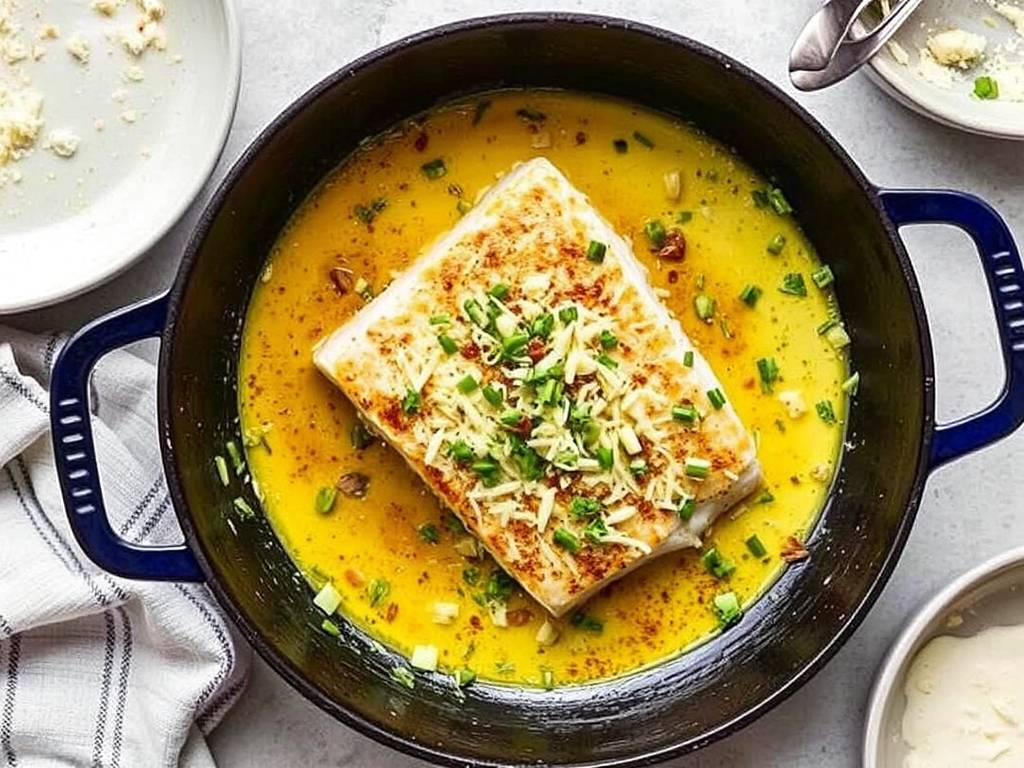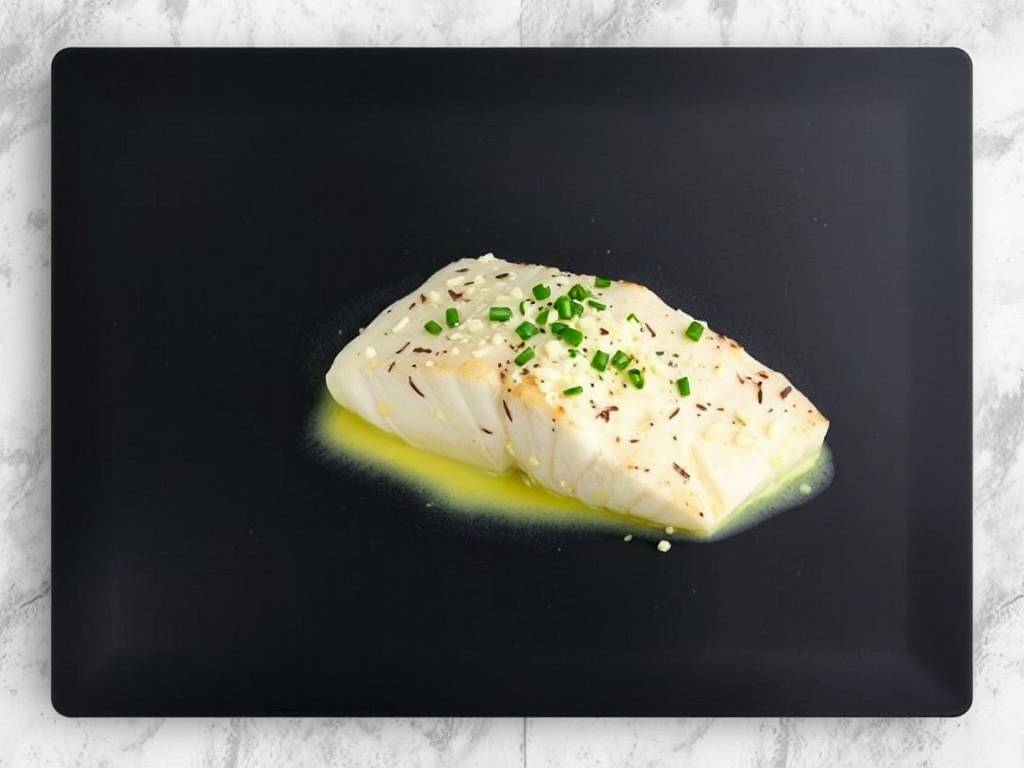The Art of Baking Cod: A Culinary Journey with Parmesan and Butter Sauce
In the vast and varied world of seafood, cod stands as a humble yet noble champion. Its mild, flaky flesh is a pristine canvas, eagerly absorbing the flavors it is paired with. While it can be battered and fried, poached in broth, or grilled over open flames, there is a particular method that elevates it to a state of sublime elegance: baking. And when this simple baking technique is married with the rich, transformative powers of a Parmesan and butter sauce, the result is nothing short of culinary magic. This dish, seemingly simple in its construction, is a masterclass in balance—the delicate sweetness of the fish, the salty, nutty depth of the cheese, and the luxurious, velvety embrace of butter creating a symphony in every bite.
The journey to perfection begins not in the oven, but at the market. Selecting the right cod is the foundational step upon which the entire dish rests. Look for thick, pearly-white fillets with a firm texture. They should glisten with a fresh, clean scent of the sea, with no overly "fishy" aroma. Whether you choose Atlantic or Pacific cod is a matter of preference, but ensure the fillets are of even thickness, ideally around one to one and a half inches. This uniformity is crucial for even cooking. If your fillets have a thinner tail end, you can tuck it under to create a more consistent shape. Once home, pat the fillets thoroughly dry with paper towels. This step is non-negotiable; moisture is the enemy of a beautifully seared surface and can lead to a steamed, rather than baked, texture.

While the cod rests, we turn our attention to the heart of the dish: the sauce. A Parmesan and butter sauce, at its core, is a celebration of umami. The process begins with clarifying or simply melting high-quality unsalted butter. Using unsalted butter is essential, as it gives you complete control over the seasoning, especially since Parmesan cheese itself is quite salty. Gently melt the butter in a saucepan until it just begins to foam, releasing its nutty fragrance. Meanwhile, the Parmesan must be freshly grated. Do not, under any circumstances, use the pre-grated, powdery cheese found in tubs. These products are often coated with anti-caking agents like cellulose, which prevent them from melting smoothly into a silky sauce. Instead, take a block of genuine Parmigiano-Reggiano or a high-quality Grana Padano and grate it yourself using a microplane or the fine side of a box grater. This creates a light, fluffy snow of cheese that will incorporate seamlessly.
To this melted butter, we introduce aromatics. A finely minced garlic clove, sautéed for just 30 seconds until fragrant but not browned, forms the aromatic base. For an extra layer of complexity, a tablespoon of finely chopped shallot can be added before the garlic. The key is to cook them gently, allowing their sugars to caramelize slightly without burning. At this point, a splash of dry white wine, such as a Sauvignon Blanc or Pinot Grigio, can be introduced. Let it simmer and reduce by half, which will cook off the harsh alcohol and leave behind a subtle acidity that will cut through the richness of the sauce. If you prefer not to use wine, a squeeze of fresh lemon juice added at the very end is a superb alternative.
Now, the grated Parmesan is gradually whisked into the warm butter base. The heat should be low to prevent the cheese from seizing and becoming grainy. As you whisk, you'll witness the transformation: the butter and cheese emulsify into a creamy, homogenous sauce. To enhance this emulsion and add a touch of body, a tablespoon or two of heavy cream or crème fraîche can be incorporated. This is optional but highly recommended for an exceptionally luxurious texture. Finally, a flourish of fresh herbs is stirred in. Fresh chopped parsley is classic, providing a bright, grassy note, while chives or tarragon offer their own unique personalities. Season judiciously with freshly ground black pepper; you will likely need little to no additional salt thanks to the Parmesan.
With our components prepared, we assemble the dish. Preheat your oven to a high temperature, around 400°F (200°C). A hot oven is critical as it will quickly cook the fish, ensuring a moist interior while encouraging a lightly golden top. Choose a baking dish just large enough to hold the cod fillets without crowding. Lightly grease the dish or line it with parchment paper to prevent sticking. Arrange the dried cod fillets in the dish, and season both sides generously with salt and pepper. A light drizzle of a neutral oil like avocado or grapeseed oil on the fish itself can help promote browning.

The next step is where artistry meets technique. Spoon the Parmesan-butter sauce generously over each fillet, ensuring they are completely enveloped. For an extra textural contrast, a final topping can be added. A mixture of Panko breadcrumbs, a little more grated Parmesan, and a drizzle of melted butter, combined and sprinkled over the sauced fish, will create an irresistible golden, crunchy crust as it bakes. This topping is a simple addition that elevates the dish from excellent to extraordinary.
Place the baking dish in the preheated oven. The cooking time is relatively short, typically between 12 to 15 minutes for fillets of average thickness. The exact time will depend on the thickness of your fish and the characteristics of your oven. The goal is to cook the cod until it is just opaque throughout and flakes easily with a fork. An instant-read thermometer is the most reliable tool; insert it into the thickest part of the fillet, and it should read 135-140°F (57-60°C). Remember, the fish will continue to cook from residual heat after being removed from the oven, a phenomenon known as "carryover cooking." It is far better to slightly undercook than to overcook, as overcooked cod becomes dry and tough.
Once perfectly baked, remove the dish from the oven and let the cod rest for a couple of minutes. This allows the proteins to relax and the juices to redistribute throughout the fillets. A final squeeze of fresh lemon juice over the top just before serving brightens all the flavors and adds a necessary spark of acidity.
The beauty of this baked cod with Parmesan and butter sauce lies not only in its exquisite taste but also in its versatility. It is a weeknight dinner hero, coming together in under 30 minutes, yet it is elegant enough to serve at a dinner party. For a complete meal, consider your accompaniments carefully. The rich sauce begs for something to soak it up. Creamy mashed potatoes, perhaps infused with roasted garlic, are a classic and comforting choice. For a lighter option, a bed of fluffy quinoa or couscous works wonderfully. As for vegetables, roasted asparagus spears, sautéed spinach with a hint of nutmeg, or simple steamed green beans provide a fresh, vibrant counterpoint to the decadent fish.
In conclusion, baking cod with a Parmesan and butter sauce is more than just a recipe; it is an exercise in understanding how a few quality ingredients, treated with respect and care, can create a dish greater than the sum of its parts. It teaches the importance of sourcing, the science of emulsification, and the critical nature of precise cooking. From the first flake of tender, snow-white fish to the last swipe of sauce from the plate, this dish is a testament to the fact that the most memorable meals are often born from simplicity, executed with passion.






发表评论